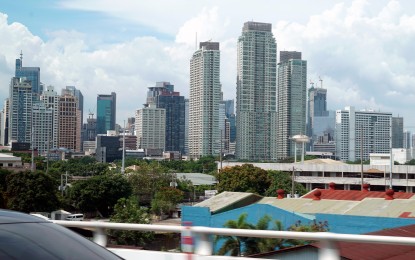[12.20 PH의 경기 침체를 막을 강력한 내수
컨텐츠 정보
- 16,691 조회
본문
MANILA – 높은 인플레이션과 예상되는 세계 경제 둔화는 2023년 경제에 타격을 줄 것으로 보이지만 한 경제학자는 내수가 국내 경제를 부양하고 외부 위험의 영향을 완화하는 것으로 보인다고 말했습니다.
월요일 가상 브리핑에서 Manulife Investment Management 글로벌 매크로 전략 공동 책임자인 "Sue Trinh"은 연방 준비 제도 이사회의 주요 정책 금리가 투자자들의 우려를 더하고 이러한 요인들이 시장 변동성을 증가시키는 것으로 보이는 시기에 대한 불확실성을 말했습니다.
그러나 그녀는 필리핀 경제가 이러한 사건들로부터 비교적 고립되어 있다고 언급하면서 국내 경제의 경기 침체를 무시했습니다. 그녀는 "매우 좋은 출발"이라고 말했습니다.
그녀는 "그러나 인플레이션 상승과 매우 공격적인 통화 긴축의 기저 효과를 감안할 때 국내 수요는 다소 부드러울 것"이라고 말했다.
경제관리자들은 올해 1~3분기 견실한 성장세를 보인 후 역풍이 거세지고 있음에도 불구하고 최근 정부의 올해 성장률 가정을 6.5~7.5로 유지했습니다.
국내총생산(GDP)으로 측정한 성장률은 올해 1분기 전년 동기 대비 8.2%로 전분기의 7.8%보다 높아졌다.
다음 분기에는 7.5%로 둔화되었지만 3/4분기에는 7.6% 성장하면서 개선된 모습을 보였습니다.
올해 첫 9개월 동안의 성장률은 7.76%였습니다.
이 결과는 지난해 11월 기준 평균 5.6%로 정부의 목표치인 2~4%를 초과한 더 빠른 인플레이션율을 해결하기 위한 BSP(Bangko Sentral ng Pilipinas) 주요 정책 금리의 지속적인 인상으로 발생했습니다. 밴드.
러시아-우크라이나 분쟁에 따른 국제시장의 유가 등 원자재 가격 급등 영향으로 지난 4월부터 월간 물가상승률이 정부 목표치를 넘어섰다.
상황은 대부분의 경제에서 거의 동일하며 미국의 인플레이션은 40년 만에 최고치를 기록했습니다.
이에 따라 연준은 기준금리를 지난 3월 이후 총 425bp 인상해 12월 14일 기준 4.25~4.5로 끌어올렸다.
연준의 금리 인상은 BSP가 미국과 적절한 금리 차이를 보장해야 할 필요성을 이유로 주요 정책 금리를 인상한 요인 중 하나입니다.
이러한 요인에도 불구하고 "Trinh"은 내년 하반기에 세계 경제의 상황이 개선될 것으로 예상되며 "이러한 역풍이 완화되어 금융 시장에 보다 유리한 조건을 안내할 것"이라고 말했습니다.
그녀는 "우리의 기본 사례는 어렴풋이 나타나는 부정적인 수요 충격이 성장 우려가 인플레이션에 대한 우려를 넘어서기에 충분할 것이며, 이는 연준이 비둘기파적 피벗을 취하고 잠재적으로 2023년 4분기에 금리를 완화할 수 있는 길을 열어줄 수 있다는 것"이라고 말했습니다. .
그녀는 회사 전망의 주요 위험은 "스태그플레이션 저점의 시기, 중국의 완전한 재개, 미국 달러의 정점"과 관련이 있다고 덧붙였습니다. (PNA)
This is the Original Article from PNA NEWS
[12.20] Robust domestic demand to thwart recession in PH
MANILA – Elevated inflation and the expected global economic slowdown are seen to hurt economies in 2023 but an economist said domestic demand is seen to buoy the domestic economy and cushion the impact of external risks.
In a virtual briefing on Monday, Manulife Investment Management Global Macro Strategy Co-head "Sue Trinh," said uncertainty over when the Federal Reserve’s key policy rates add to investors’ concerns and these factors are seen to increase market volatility.
She, however, discounted any recession for the domestic economy, noting that the Philippine economy is somewhat relatively insulated from these events, which, she said, “is a very good start.”
“Domestic demand is likely to be a little softer, however, given the elevated inflation and given the base effects of pretty aggressive monetary tightening,” she said.
Economic managers recently kept the government’s 6.5 to 7.5 growth assumption for this year despite the increasing headwinds after noting robust growth in the first three quarters of the year.
Growth, as measured by gross domestic product (GDP) expanded by 8.2 percent year-on-year in the first quarter of the year, higher than the previous quarter’s 7.8 percent.
It slowed to 7.5 percent the following quarter but posted an improvement in the third quarter when it grew by 7.6 percent.
Growth in the first nine months this year stood by 7.76 percent.
This output transpired amid the continued hikes in the Bangko Sentral ng Pilipinas’ (BSP) key policy rates, which are aimed to help address the faster inflation rate, which averaged at 5.6 percent as of last November, exceeding the government’s 2-4 percent target band.
The monthly rate of price increases surpassed the government’s target band since last April due mainly to the impact of jumps in prices of oil and other commodities in the international market on account of the Russia-Ukraine conflict.
The situation is almost the same in most economies, with the US inflation hitting its highest in four decades.
As a result, the Federal Reserve’s key rates have been hiked by a total of 425 basis points since last March, bringing it to 4.25 to 4.5 as of Dec. 14.
The Fed rate hikes are among the factors the BSP hiked its key policy rates, citing the need to ensure adequate interest rate differential with the US.
Despite these factors, "Trinh," said the situation is projected to improve in the second half of next year for the global economy “during which these headwinds are likely to moderate, ushering in more conducive conditions for the financial markets.”
“Our base case is that the looming negative demand shock would be sufficient to see growth concerns overtake worries on inflation, and that could pave way for the Fed to take a dovish pivot and potentially ease rates during the fourth quarter of 2023,” she said.
She added that primary risks to the firm’s projection involve “the timing of the stagflation trough, China’s full reopening, and the US dollar’s peak.” (PNA)
관련자료
-
이전
-
다음


